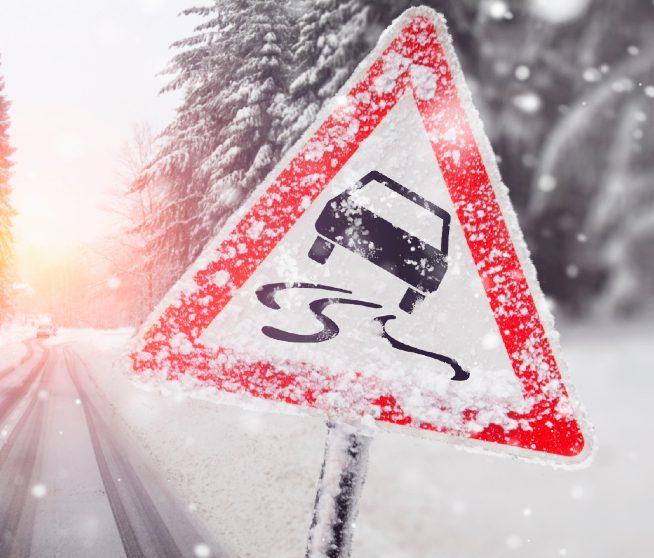How Is Fault Determined in a Car Accident Caused by Black Ice?

Black ice is common in places where it rains often and where temperatures can drop quickly. It is notoriously hard for drivers to see and leads to a large number of accidents every year. Black ice is one of the most dangerous conditions to drive on because of this, and since Colorado sees a lot of black ice, car accidents caused by the slippery conditions are unfortunately common.
Ice also makes it harder to determine who is at fault for the accident and who should have made better decisions to avoid the accident. Partnering with Mintz Law Firm in the wake of a car accident caused by black ice can help you figure out liability and who was at fault.
How Is Black Ice Different from Ice and Snow?
Black ice is essentially a thin layer of ice that is not visible to the naked eye. It occurs when there is a layer of water on the ground that freezes and creates a sheet of ice. This sheet of ice is usually thinner than regular ice or snow, making it almost impossible to detect or see from a distance.
Insurance companies will look at whether or not the roadway was wet or icy to help determine whether any of the driver’s involved were driving inappropriately for the road conditions. Since black ice is extremely thin, it melts quickly when exposed to sunlight and warmer temperatures, making it much more hazardous in colder climates where temperatures remain low for longer periods of time.
What Happens When a Car Drives Over Black Ice?
When a car crosses over black ice, the most dangerous consequence is that the vehicle may skid. The tires of the car may not be able to grip the icy surface and thus will begin to slide uncontrollably. If this happens, drivers should try their best to remain calm and steer gently in the direction of the skid, as applying brakes or accelerating could make it worse.
Take extra care when driving on roads that are known for having black ice in the winter months. Also, be sure to check your tread depth and tire pressure regularly as these can help you stay safe on icy roads. Being aware of how black ice works and where it’s likely to appear can help you avoid causing or being involved in an accident.
How Is Fault Determined for a Black Ice Accident?
When determining fault for a black ice accident, several factors are taken into consideration. First and foremost, the roadway and weather conditions at the time of the car accident must be looked at. Insurance companies will look at whether or not the roadway was wet or icy to determine if black ice caused the accident. If it is determined that black ice was indeed responsible, then only one driver may be held liable for the accident.
Generally, if a driver was negligent in some way, such as speeding, they may be held liable for the accident, even if it was caused by black ice. On the other hand, if both drivers were driving responsibly, then it may be difficult to determine who is at fault for the accident and insurance companies may assign no fault. Ultimately, when dealing with a black ice accident, all factors must be taken into consideration in order to accurately determine who is at fault. Due to how complex these cases can be, it often takes insurance companies a longer amount of time to assign fault.
Seek Legal Help After a Black Ice Accident With Mintz Law Firm Today
Accidents happen all of the time, but black ice can complicate your car accident claim. If you are involved in an accident, one of the best things that you can do for yourself is to seek legal help from a skilled attorney.
If you need legal advice, Mintz Law Firm is here to answer any questions you may have following your accident. We help drivers involved in black ice accidents get the compensation that they are owed. Contact Mintz Law Firm at (303) 462-2999 or by using our contact form to discuss your case to learn how our team can help you.
